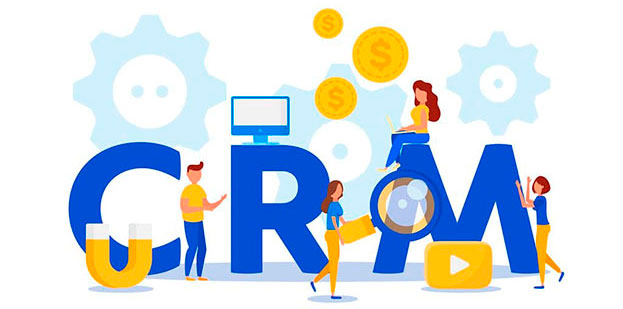Customer Service Automation: What It Is And How You Can Use It
Automation is everywhere today - from ordering a pizza, booking a hotel room, from checking in luggage at the airport to booking a cab to go to work.
Automation has pervaded every single industry and the customer service industry is no exception.
In fact, it could be that the customer service industry stands to benefit the most from AI-driven automation. The experts predict that by 2020, 85% of all customer interactions can be completed without involving a human agent.
And according to a recent study, 70% of millennial women are completely comfortable with the idea of solving a problem without having to talk to a customer service agent.
So what are the advantages of automating your customer service? Read on to find out!

What are the advantages of customer service automation?
1. Faster response times
In an average 6-minute service call, 75% of that time, agents are doing manual research and actual human customer interaction is limited to only 25% of the entire call. This delay can be avoided entirely if instead of agents, AI could be used to go through company servers, previous occurrences of the related problem and come up with a detailed guide or solution.
The quicker a problem is solved, the happier your customers will be. In fact, according to a study, 39% of customers try to solve a problem themselves by visiting the FAQ page first, before seeking the help of customer service.
They feel satisfied with themselves if they can fix a problem without any external aid. Autodesk, for example, was able to speed up its customer service by an amazing 99% by developing a virtual assistant to handle customer service queries on the front end.
2. Pre-emptive action
Prevention is the best cure and if you can solve a problem before it even arises, it makes for a really happy customer. Often, all you have to do is simply provide relevant information to the customer.
AI has tremendous potential to analyze customer data, previous interactions with company agents, and identify frequently recurring customer issues and problems by monitoring website, and in-app activity for distress indicators.

3. Reliable, 24/7 customer service
Although outsourcing customer service to call centers can make for customer services that are available 24/7, it’s still a challenge on public holidays and in times of national emergency.
Automated customer service is always available and will respond to your customer's queries within minutes. They don’t need to wait around for several hours or days for a response.
But most importantly, automated customer service is reliable.

It is not prone to personal biases, afflictions, or a lack of knowledge. A recent study showed that 42% of customers become repeat customers after a good customer service experience, whilst 52% stopped their purchases after a single poor customer service interaction.
AI will not argue with a customer nor take matters into their own hands nor put customers on hold indefinitely. AI can be automatically programmed to escalate a query to the relevant party whenever necessary.
4. Less cost
On the business end, cutting costs is the primary motivators behind employing AI. On average, it takes $5000 to train a customer service agent, not to mention the monthly salary which you have to provide.
Then there’s the problem of bonuses and raises once an employee has put in a number of years. These come with additional training programs and costs. AI only needs to be trained once and it can be trusted to remember every one of its lessons.
5. Prioritizing queries
The simplest and most common queries can be handled by automated responses, FAQ sheets, and instruction manuals. However, for more serious and complicated support requests, you can simply implement a system where such queries get tagged with certain labels and markers.
You can use these rules to prioritize important customers and the most serious queries.
You can implement a multi-tier support automation system where according to tags, these queries get transferred to human employees of varying degrees of expertise. In fact, plenty of companies offer ‘premium support’ where they bring requests from their premium customers to the front of the queue.
6. Reduce duplication of effort
Like we mentioned above, when a request is transferred to a new employee, he should get the records of the conversation that the customer was already having, along with probable solutions and guides.
Customers hate having to repeat their problems to a second or third person. In fact, according to Capterra, 72% of customers blame a poor customer experience on having to explain their problem multiple times.

Because most companies have multiple communication channels, including instant chat on website and app, email, query submission pages, and phone automation, it’s necessary to have a unified platform where all the data regarding a single query gets compiled, regardless of which channel it came in through.
This reduces duplication of effort for both the customer and the customer service agent.
Customer Service Best Practices: How to Automate
1. Make sure it's helping not complicating
You need to first figure out which tasks need automating. These are usually tasks that are redundant and repetitive for example, regular problems, product demonstrations, self-resources and FAQs, usage monitoring and checkout queries. You need to choose your battles.
Using human resources on these tasks is time-consuming for both employees and customers. However, your business still needs to be customer-centric. As a result, you don’t want your customers to go through a series of steps explaining their problems to a bot, before connecting them to a human.
Query answer automation should always simplify and increase your problem-solving time.
2. Always give the option of talking to a human
Plenty of people like to take it slow and would always prefer a human touch. An older customer would definitely trust a company more if they can form an emotional connection - something you can’t achieve through machines.
Also, if someone is going through a particularly tough problem, the last thing they want to do is talk to a bot. Hence, always have an option where your customers can connect with a human representative.
Automation isn't always a substitute.
3. Have a knowledge base for every customer
If you want to utilize AI to the fullest, it’s imperative you keep a record of everything about a customer. Most CRM software solves exactly this purpose: that is storing all relevant details about a customer, including past purchases, past interactions, etc.

This will not only help you save the customer of explaining his problem if it’s a recurring one, but will also help you predict future behavior and issues the customer might have to face in the future.
4. Do beta testing and ask for feedback
It’s important to roll out new changes slowly. Start small, run tests to see if it’s working well and then move forward with it. However, during testing, you’ll only get to know a fraction of the potential problems that your new system might cause.
To get a more complete picture, you must absolutely ask for feedback from your customers, whether they talk to your agents or chatbots. Constructive feedback will help you learn about the areas where your customer support is lacking and you can then get to work on it.
It’s always important to give your customers a voice, without which you can’t work towards improved customer service and bettering your company’s policies.
5. Use the money and time saved to train employees
Make sure you use the time and money saved by automation to train your employees in new skills and trades. The bottom layer of menial tasks can be handled by service automation, which frees your employees up to learn how to use more tools, get more training and be in a better position to work with automation.

It might be tempting to pocket the difference in profits, but it will pay off in dividends if you reinvest that profit in your employees themselves. Employees are the heart of a company, and if you can’t keep your employees happy, you’ll have a hard time maintaining the company’s reputation and image.
How Not to Automate
1. Improper configuration leads to a damaged reputation
You should have the ability to measure, analyze and cross-reference every step of your automation funnel. Without proper measurement, you won’t understand what’s working and what’s not.
If your system isn’t configured right and your customer service process sends your customers around in a circle or fails to provide them the right information, then it’s a problem. Customers will definitely associate your brand with its customer support and a dissatisfied customer can seriously damage your reputation.
Dissatisfied customers are often much more vocal than happy customers and a single slip up could be very bad news for you.
2. Don't replace a system, complement it
In order to cut costs, it may be tempting to replace an existing system or let go of your customer service team. However, what you should try to do instead is keep the old systems in place and add on to it.
If you just replace a system without having a full assurance that the new one will work just as well, you’re bound to come across a number of unforeseen problems.
3. Don’t be inconsistent across different channels
Your customers will likely interact with your brand through several channels. All of them need to have the same degree of automation, not more, not less. Plenty of companies make the mistake of designing their apps in a much more AI-friendly way.
When customers have problems while using the app, they are forced to open the website and rally their problems from there. This causes frustration and leaves your customers confused as to where to turn for customer support.
Conclusion
AI and automation are great tools to help and amplify your success. In many cases, customers prefer it too, as their queries get solved more efficiently. In a recent survey, 86% of customers said they would pay more for a better customer experience.
But your human resources are still the backbone of your company and AI and automation can only work in tandem with your employees.
But as time goes by and automation grows more advanced, it gives you the opportunity to reduce the number of redundant tasks for your employees and teach them a whole new skill set and prepare them for a rapidly changing world.